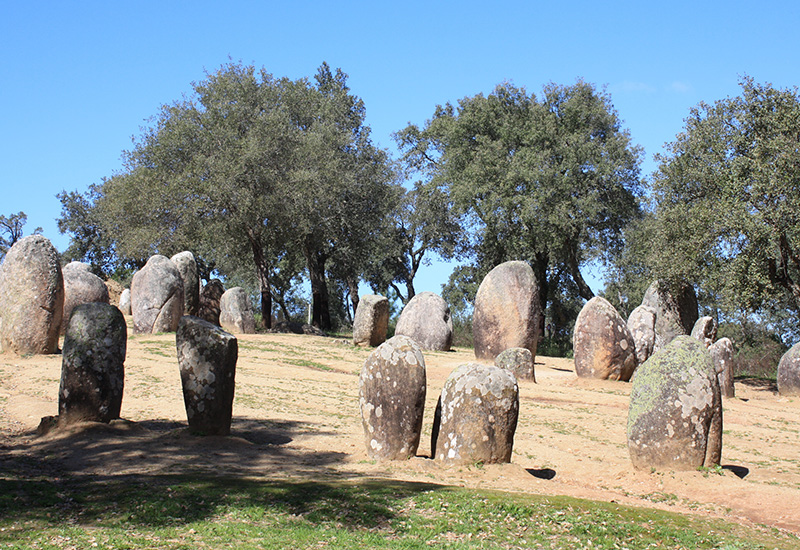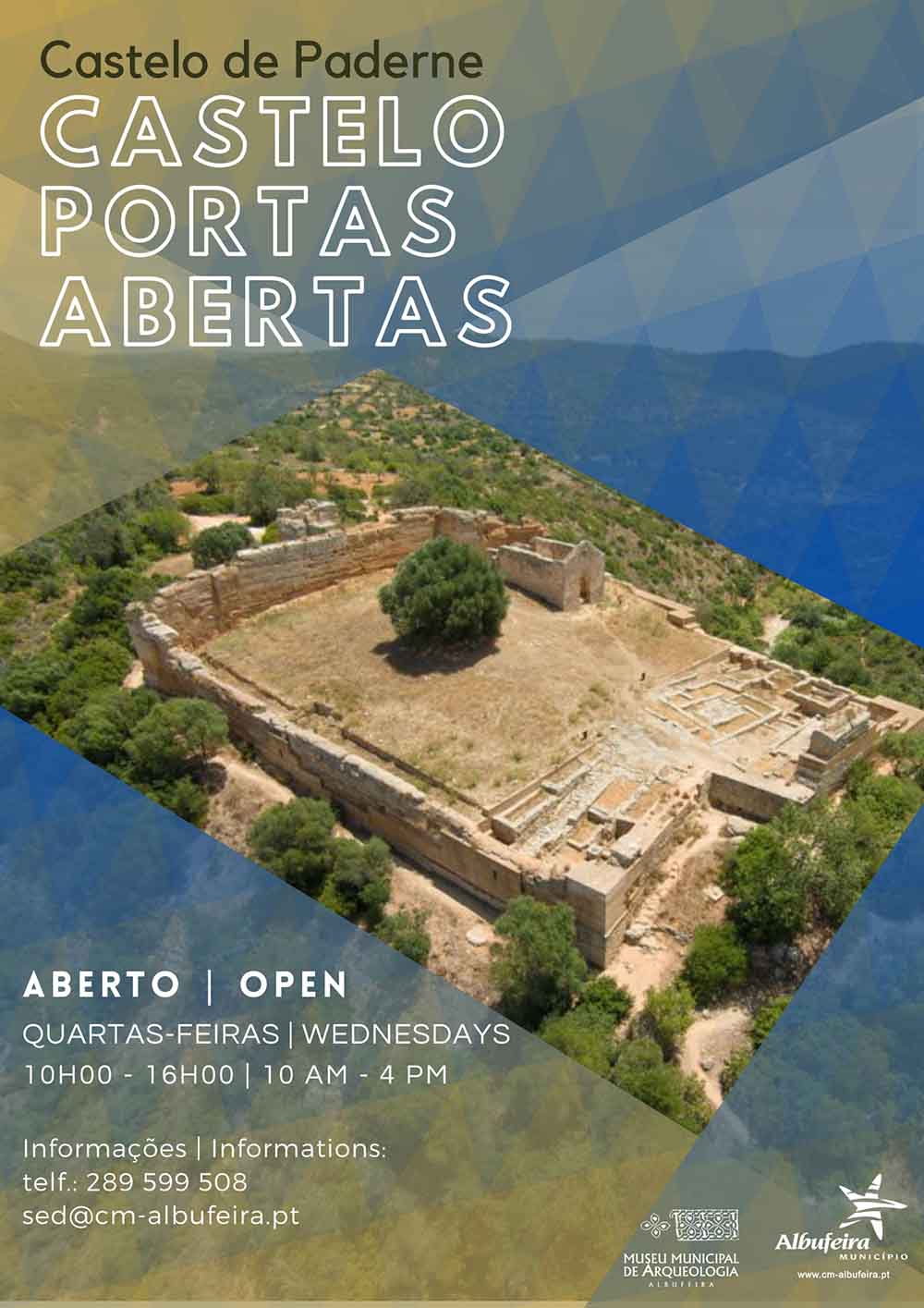WORDS Michael Upton
From Lagos, it’s a drive of less than three hours to the historic city of Évora, the capital of the Alentejo region. Leave the A2 motorway and take the IP2 road via Beja, where it must be said you’re not likely to find anything as fascinating as further north. You then travel over a bald plateau landscape which eventually gives way to oaks and pines. There sits the small town of Portel with its commanding 13th-century castle, unfortunately, not open to the public.
Évora is a delightful old city, boasting a Roman temple, or let’s say half of a Roman temple, and a cathedral nearby, large but not architecturally distinguished. There is also a 16th-century aqueduct and lots more to see in this World Heritage location, but my attention was elsewhere, and the next day I ventured out on the west side of the city to explore a unique cluster of ancient stone circles and burial sites.
At the edge of the sleepy village of Guadalupe, there is a modest visitor centre clad in dark-stained cork slabs. The nearby bilingual description boards are excellent, while Bito, the centre’s guide, proves very knowledgeable on all the megaliths in the area.
From this point on, the drive is over a dirt track through a lovely gentle Montada landscape: grass-covered slopes dotted with oaks. It is a landscape, we’re informed, which developed in the early Neolithic period with the displacement of hunter-gatherer people by the innovations of agriculture. It’s a “constructed” ecosystem, surviving today in southern Europe and north Africa, supporting an agricultural economy – cattle grazing, cheese, foraging and, in the Alentejo at least, cork harvesting. Many of the trees bear a painted number denoting the year in which the cork bark was last harvested. Add nine to give you the last digit of the next year to harvest that tree’s cork. The Iberian lynx has been sighted here, but I was not so lucky.
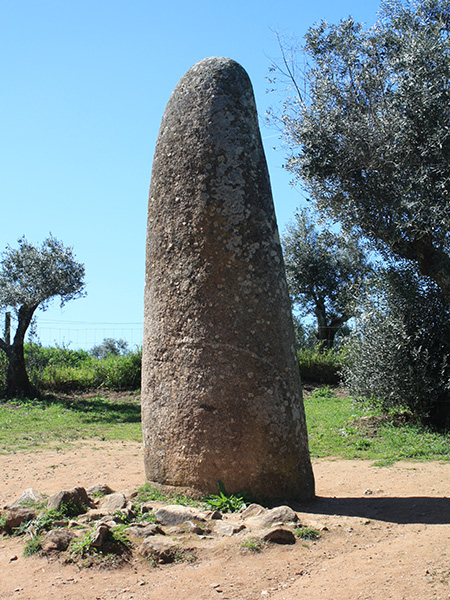
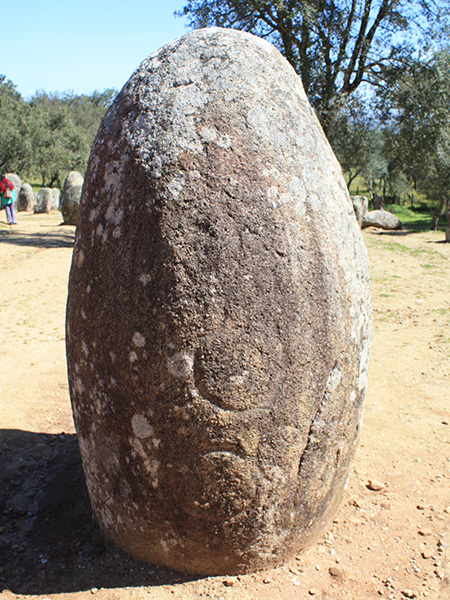
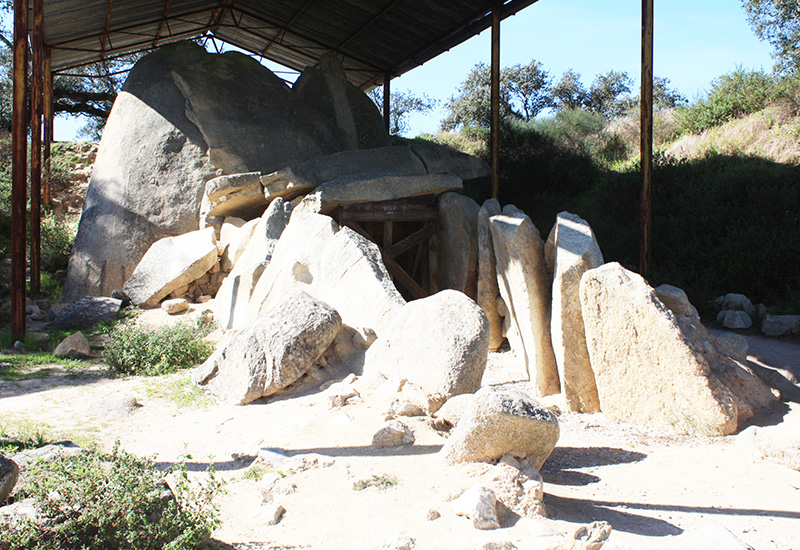
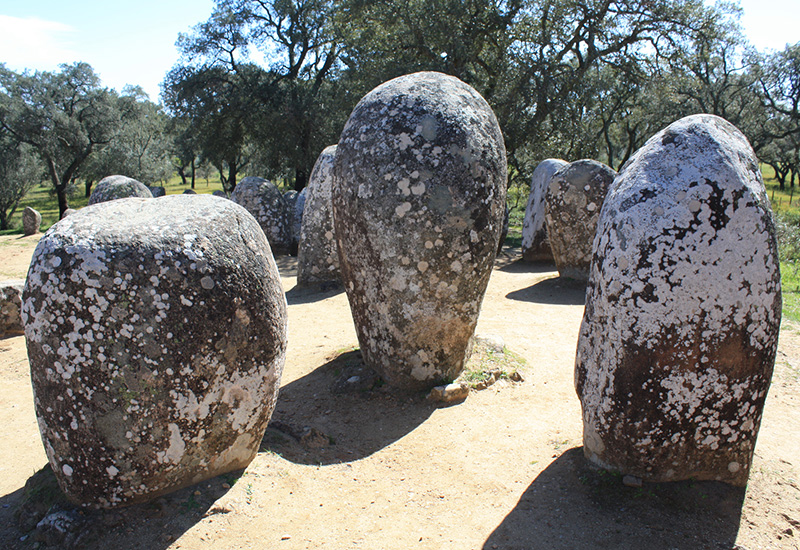
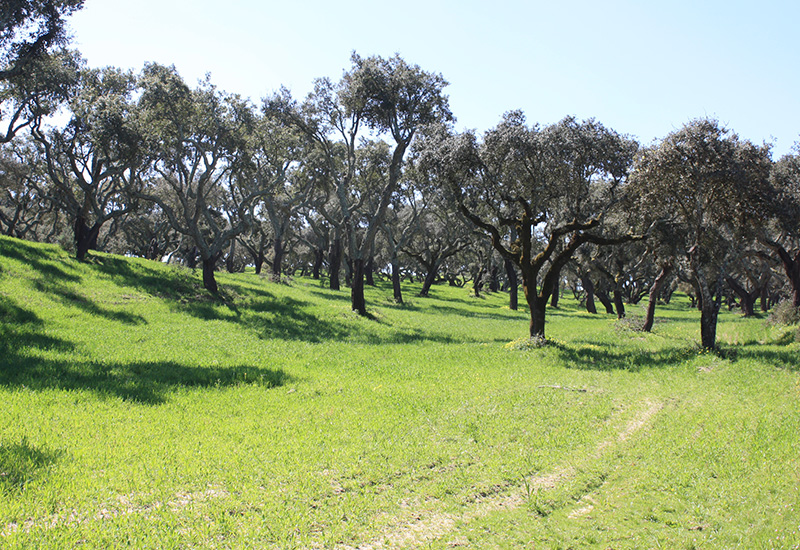
The antiquity of the Almendres Cromlech is staggering; the largest megalithic monument in the Iberian Peninsula, it is possibly two millennia older than England’s Stonehenge. The 100 or so stones, many standing but some recumbent, sit on ground sloping towards the eastern horizon in an approximate ellipse. We have to assume the Neolithic communities who built the cromlech would gather here at various times of the annual solar cycle, equinoxes and solstices. A few of the stones bear worn carvings, some anthropomorphic, whose meaning will always remain unclear.
On the way back to the village, a muddy footpath takes you a couple of hundred metres south down a small valley to a single menhir (standing stone). Probably at a later time than the cromlech, the menhir was positioned in alignment with it at sunrise on the summer solstice. I challenge anyone acquainted with the Asterix The Gaul stories to resist thinking of Obelix carrying this massive stone, over three metres tall above ground, across the Almendres slopes.
A third site, the funerary Anta (dolmen) of Zambujeiro is a few kilometres south, outside another equally sleepy village, Valverde – so sleepy that most of its cafés were closed at lunchtime. The dolmen is one of the largest in the world, built towards the end of the Neolithic period about 5,500 years ago. It’s a large burial chamber for collective use and indeed, the archaeologists studying the site found remains of at least 100 ancient burials.
It’s only a matter of time before these undersold sites become flooded with visitors and the two quiet villages are overrun with fast-food outlets and trinket stalls. And visitors will have to pay to get in. It has happened all over the world: my advice is to go sooner rather than later!


